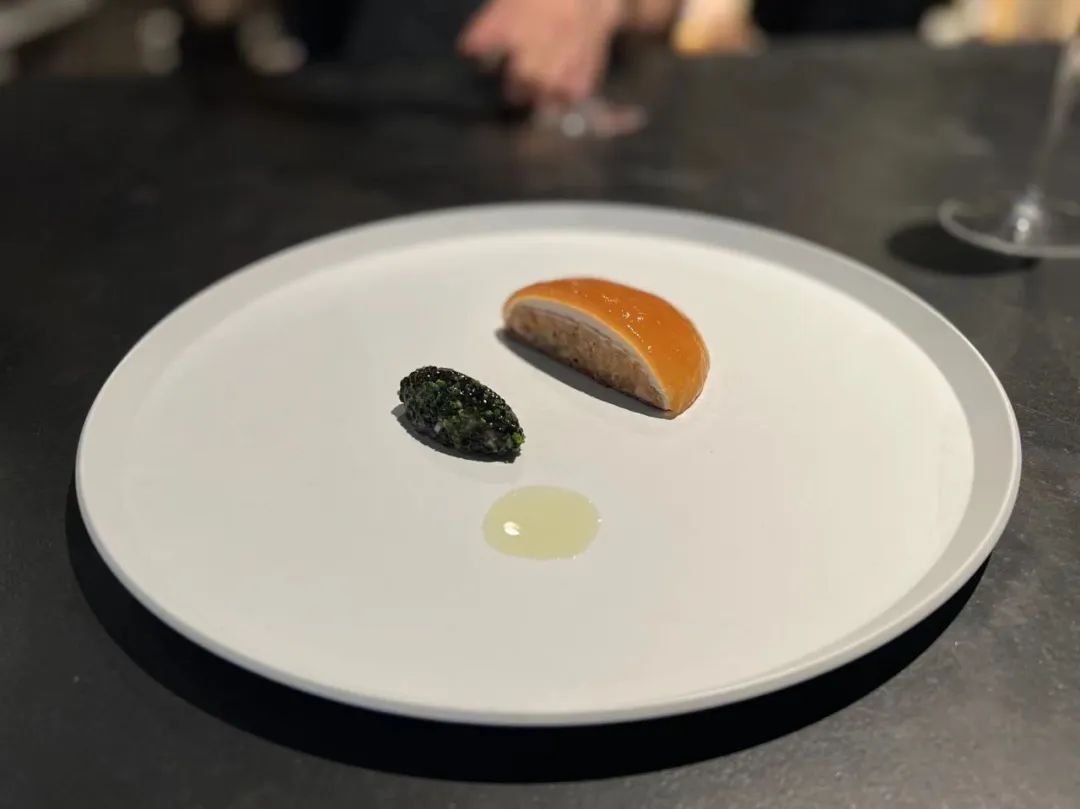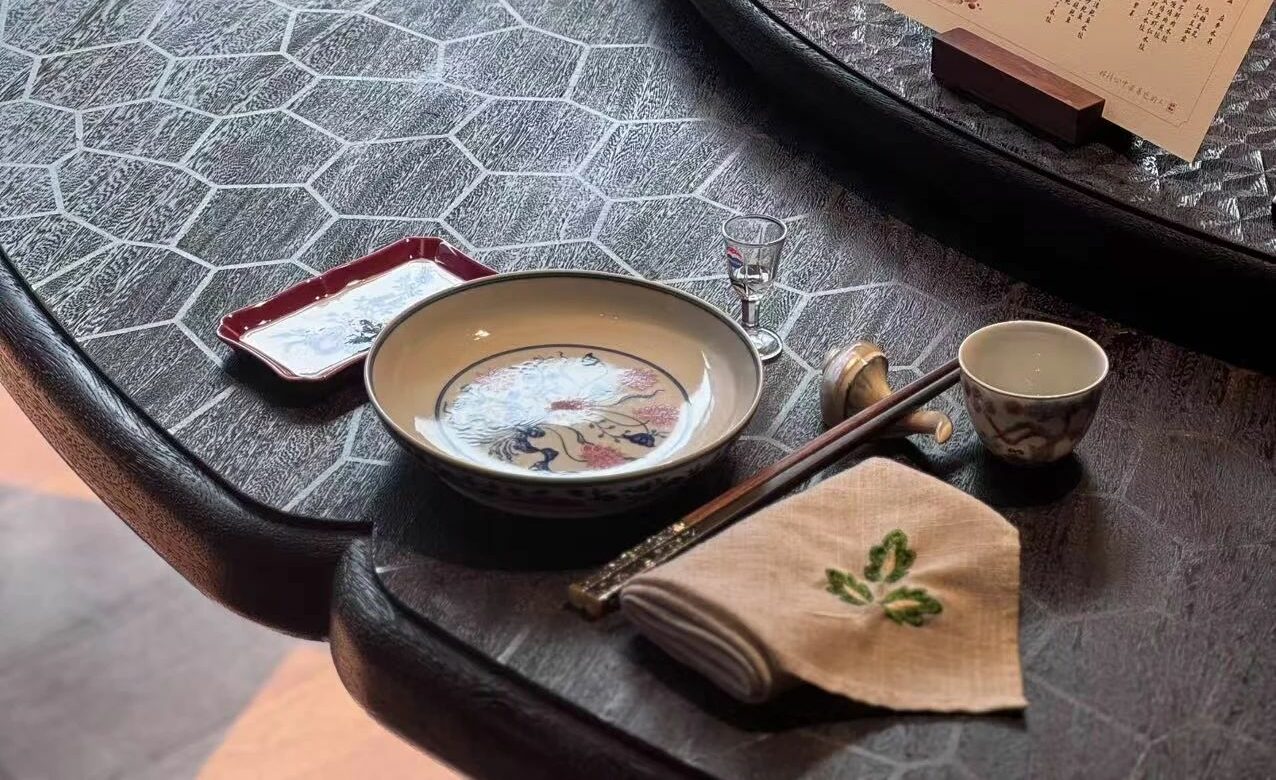I have known Chef Hiroyasu Kawate of Michelin two-starred restaurant Florilège in Tokyo for many years. He is a champion of nature and connects his cuisine with it; even “Florilège” means a collection of beautiful poems like flowers. He is a master of using a single ingredient in a variety of ways, fusing simplicity with sophistication, and intuitively applying delicious flavour combinations to bring out the best in each ingredient.
Born into a culinary family in Tokyo, Kawate always had his sights set on being a chef. After working at a French restaurant in Tokyo and training at the three-starred French restaurant Le Jardin des Sens, he returned to Tokyo and worked at the three-starred Quintessence, where he became sous chef two years later and founded Florilège in 2009 when he was under 30.


Florilège
In 2019, I invited Kawate to Shanghai for a collaboration event. He might seem cool and dignified, but during the collaboration I found he is actually a coordinated, funny and warm person. When Den won the first place on Asia’s 50 Best Restaurants 2022 list, it was a touching sight to see him and his long-time friend Chef Zaiyu Hasegawa embracing each other as they barely managed to keep the tears in check on the ceremony.

Kawate is clear in his goals and bold in his approach, especially in the early focus on sustainability before the market took it as a trend. His signature ‘sustainability beef’ carpaccio is taken from the meat of mature, 13-year-old breeding cows from Takasaki, which was an avant-garde dish at the time. Now Kawate’s pursuit of sustainability is even more evident.
Not the first of its kind in Japan, Florilège is an intimate experience set around a counter where the chefs cook everything right in front of the guest, with full attention to detail to provide top-notch hospitality. The space is far more spacious than it looks in the photos. It is a theatrical ringside setting where the chef is the star of the show.

After three years of Covid, I visited Florilège again and was delighted to experience its refined use of all parts of the ingredients and bolder designs of the different possibilities of the same ingredient. There was also another pleasant surprise: the chef who explained the dishes to me is from Harbin in China. His name is Zhao Bohan and has been in Tokyo for seven years. He worked at Florilège for two and a half years after studying at a local culinary school. He was able to give more detailed answer in Chinese when I asked specific questions. It was a brilliant and happy experience – listening to food illustration in Chinese at a French restaurant in Tokyo.
First was a classic sweet potato dish. Green tea leaves were smoked under cherry wood to pair with the purple yam and golden sweet potato reconstituted and deep fried. This has been the opening item on the menu since I’ve known the Chef. Simple but delicious.
Next up was a shrimp dish. On a bed of biscuit layered with a shrimp sauce made from chopped sweet shrimp, spot prawn and Ise lobster; cauliflower mousse; topped with shrimp shell consommé and paired with caviar sauce (more like a side dish) and wasabi oil for a milder and refreshing taste. The result was a delightful combination of all the wonderful flavours of the shrimps.


The sardine dish was served with thin slices of pear, pickled ginger, seaweed and oba leaf (green shiso), overlaid with a ginger and cream jelly, accompanied by black garlic, balsamic vinegar, and oba oil. The ginger sauce itself is a classic pairing with sardines, but the rendition here was milder in taste with a harmonious balance of all the ingredients. The side dish was a savoury-sweet pancake with its crust made from orange juice and oil, and a mousse filling made of sardine bone broth and Japanese yuzu. This dish again utilised all parts of the ingredients.
The turnip, which is often found in Japanese cuisine, was also presented in a variety of ways here. Shioyaki (salt-grilled) Kyoto turnip was made into a mousse, mixed with oba leaves, tarragon, and umami-rich mullet roe puree, topped with turnip mousse and cream, and finished with a drizzle of orange zest oil. It is interesting to note that pairing mullet roe with turnip is also quite commonly seen in Chinese cuisine.

The carrot dish was pretty impressive in presenting varied facets of a single ingredient. The carrot pastry was covered with carrot puree, carrot slices and leaves, topped with fried carrot leaves and sided by curry sauce and curry oil. Under the flower there was also a carrot salad mixed with orange juice, a classic accompaniment to carrot cake. The carrots were deliciously sweet and the pie crust was crispy and satisfying. If not curry-flavoured, the dish would constitute a nice dessert as well.
Another dish was aubergine bisque with a cheese rice cake in the middle and drizzled with vanilla oil to give it a rich, creamy and dashi flavour. The side dish was ‘aubergine dumpling’, the wrapping made of fried and pureed aubergine skin before being flattened and dried to form a purple sheet; the filling made of aubergine flesh. Another whole-veg dish. All the vegetable dishes here are wonderfully handled to yield a rich tapestry of rich flavours.


The main course guinea fowl was the only meat dish, coupled with a sauce of chopped spinach, onion and cream, layered with sautéed spinach and topped with dried spinach powder. A special ingredient – pig’s blood – was present in the sauce. It can be unfamiliar to some western countries, except, of course, in regions where blood sausages are consumed. Here it’s used to showcase the beauty of using ingredients to their fullest. Florilège’s poultry dishes are always perfectly cooked, and the spinach puree was even more delicate and complex.
The dessert apple pie had paper-thin slices of candied apples on top and tasted light and delicious. Another chocolate dessert was layered mousse and jelly powered with liquid nitrogen-treated cheese, quite like Ludagun (fried chop rice cake, traditional Manchu snack in China). The meal ended, as always, with sweet goldenberries.



Dishes at Florilège have been nicely priced at under 10,000 yen for lunch and just over 10,000 yen for dinner. You may wonder how the restaurant can sustain the business at such prices. Perhaps the use of all parts of ingredients is one of the cost-cutting strategies, but it also costs a lot of time and effort to present a single ingredient in so many different ways. Florilège has earned a Michelin Green Star for its sustainability endeavour.
Over the years, Kawate’s dishes have been light but not bland, exuding elegance and oriental aesthetics. The menu now has a high proportion of vegetables prepared in a luscious and tasty way, not at all like harsh-to-eat diet salads. Plating may not be the most important focus at Florilège, but what harm can it cause?
Using sustainable ingredients and reducing food waste where possible, Kawate has translated the idea of fusing sustainability and gastronomy into practice.
-END-
Author: Jocelyn 华姐
Photo/Pictures: Jocelyn 华姐/Instagram











